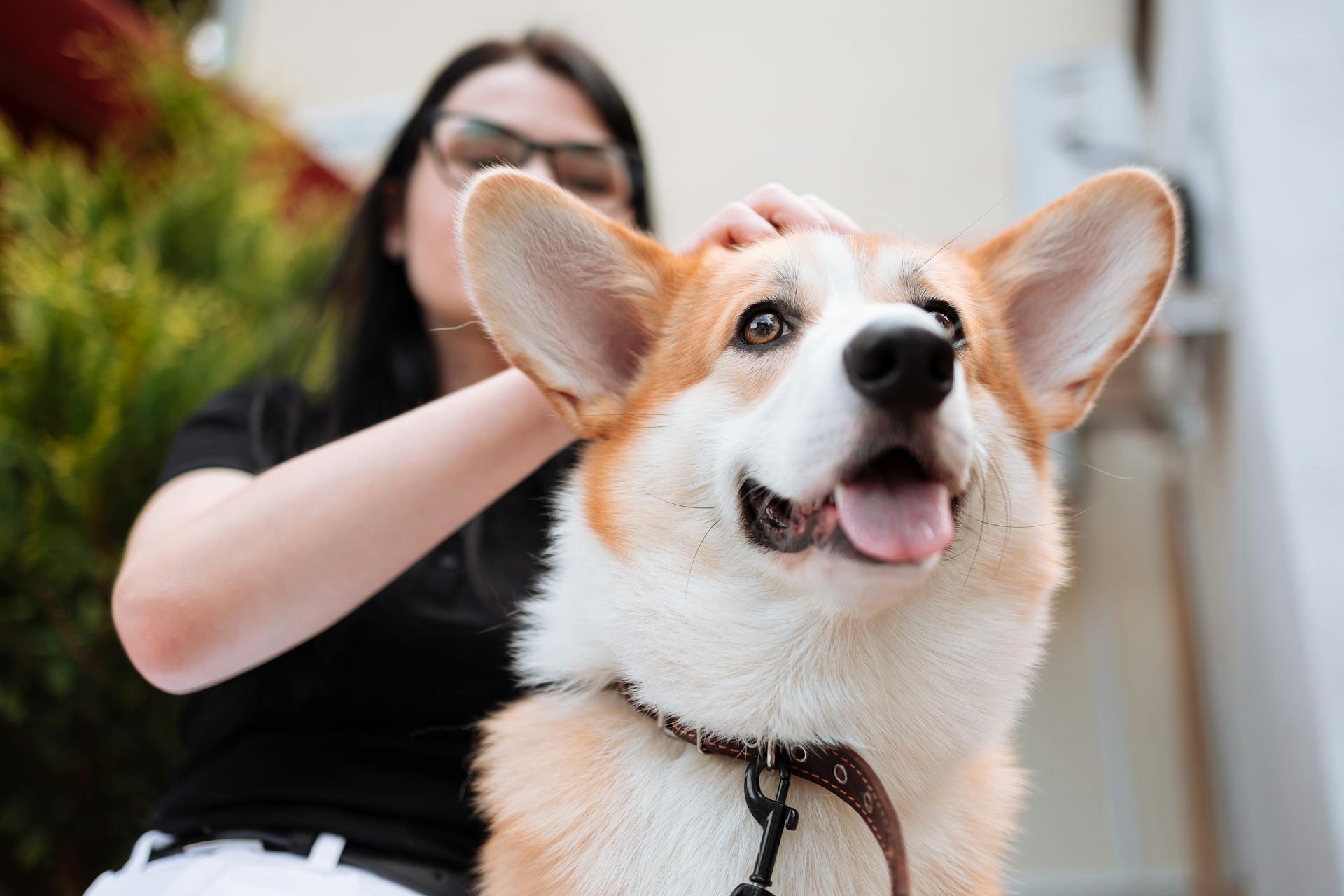
Your dog’s back leg trembling can be concerning, especially if it’s something your pup has never done before. Fortunately, there’s usually an answer that can help you determine why and how you should best take care of your four-legged pal.
First and foremost, it's important to determine the situation where the trembling is occurring and how long the trembling has been continuing. If your dog is trembling only when anxious or scared, that indicates a different cause than if their leg is shaking all the time. In exciting situations like meeting new people or animals or when anticipation of a walk or going for a ride is involved, shaking can be attributed to excitement, which is completely normal. If your pup shakes in regular situations however it could indicate something more serious like arthritis or other age related diseases.
Second, any tremors that have been happening suddenly or last more than a few seconds should get checked out by your veterinarian ASAP. This could be evidence of neurological issues such as seizures which require medical care from professionals. An exam will help rule out any underlying issues that need medical attention and give you peace of mind knowing that you are taking proper care of furry family member.
Finally, it’s important to keep in mind that some dogs may just be naturally excited and nervous creatures, leading to the occasional shake even without an obvious cause. Those pet parents who notice this pattern may simply manage the situation through appropriate training behaviour techniques such as positive reinforcement praise, treats and distraction activities rather than by interacting with it directly.
Shaking of rear legs may have multiple causes so proper evaluation by an experienced veterinarian is needed when an episode first arises in order to diagnose any possible primary causes behind the tremor before beginning possible treatment options for same. The earlier any potential condition causing these tremors is identified–the sooner it can be managed!
Why is my dog's back leg trembling?
The first thing to consider before trying to address the cause of your dog's back leg trembling is to determine whether or not your dog is actually having a seizure or if they have developed a neurological disorder such as a palsy. Seizures can cause trembling in dogs, and the intensity of this shaking can range from mild to severe. If you are unsure as to whether or not your pup is actually having a seizure, it can be helpful to look for additional signs such as loss of consciousness and uncontrolled moving of their limbs.
If your vet has determined that the trembling is not from seizures, there are many other possible sources. Neurological problems such as degenerative myelopathy, kanines frailty syndrome, and intervertebral disk disease could be causing this issue. Oftentimes these diseases can create an unsteady gait, making it difficult for the dog’s hind legs to support their body weight and leading them to tremble; however, even if these diseases have been ruled out during vet visits, sudden trembling could still be due to nerve damage or inflammation in their legs.
Pain and fear could also be causing tremors in your pup’s back legs; chronically painful joints such as those due to osteoarthritis may lead them to tremble when standing up or even when laying down during rest. Fear may also prompt involuntary shaking due to anxiety; exposure to loud noises or intense situations can lead them into an uneasy state that causes them to shake rapidly on all four limbs or focusing more intensely on either one of their hind legs.
Overall, trembling in any animal usually indicates some sort of medical condition so consultation with a veterinarian is essential in order to pinpoint the underlying source and develop a treatment plan accordingly. Once any underlying medical issue has been addressed and treated properly then you should also look at environmental changes like adjusting exposure to noise levels and creating additional safe places for calming your pup down.
You might enjoy: Vets Dog Treats
What could be causing my dog's back leg to shake?
When a dog's back leg begins to shake it can be concerning for any pet owner. This symptom is usually an indicator of underlying health issues, and it is important to address this issue immediately in order to ensure the best outcome for your pup. There are a few possible explanations for why your dog's back leg might be shaking, and understanding the cause can help you best treat the condition.
The most common explanation for a shaking back leg could be due to something known as “shaking syndromes”. This condition was first observed in dogs, and typically affects larger breeds that are especially sensitive to medication or anesthetic drugs like sedatives or anti-inflammatory medications. These drugs can cause neurological side effects such as tremors, muscle spasms and general body shaking and twitching. If you think this could be an issue, consult with your vet and inquire about possible changes to medications that your pup currently is using.
Another potential cause of back leg shaking may be due to arthritis or joint issues that your pup has developed over time from age or from activities such as running or jumping excessively on hard surfaces. In this case there may be inflammation present causing pain in the joints which can manifest as body shaking or twitching in one of the legs. There are treatments available depending on the severity of arthritis present, including non-steroidal anti-inflammatory medications (NSAIDs). Consult with your veterinarian about possible treatment options if you think this could be the cause of your pup’s symptoms.
There may also other causes such as spinal nerve damage related to trauma that could be causing the trembling sensation in one particular leg. If you suspect this is what is causing an issue with your dog’s back leg, contact your veterinarian immediately so scans can determine the root cause of these tremors and develop a plan for treatment accordingly.
In conclusion, there are numerous possible explanations for why a dog’s back leg might be shaking and understanding underlying causes can help you develop a successful treatment plan quickly and safely while ensuring quality care during recovery and beyond. If you find yourself worried about any symptoms associated with your pet, always contact your veterinarian right away as underestimating certain ailments can lead to irreversible consequences in extreme cases.
See what others are reading: What Is the Best Dog Food for Big Dogs
Why is my dog's leg twitching?
When you see your dog’s leg twitching, it might be worrying but often, this is completely normal behavior. If your pup twitches his muscles or his leg in his sleep, generally there is no need to panic. Twitching can be caused by a few different things.
First, your dog may simply be dreaming. Like a person, dogs dream and the same kind of muscle movements occur when they do so. It is much less frequent but it is possible for your pup to also suffer from an episode of narcolepsy. Narcolepsy happens when a body excessively relaxes its muscles and the dog may twitch or jerk when this happens. If your pup’s leg twitching doesn’t occur regularly and is accompanied by other symptoms such as barking or tail-chasing while sleeping, then it might just be a dream sequence in progress!
However if the episodes become more frequent and start to affect daily activities it could actually be a sign of an underlying issue such as epilepsy or stress-triggered muscle twitching. If that's what it seems to be then visit a veterinarian as soon as possible so they can run tests and help diagnose the problem correctly.
In conclusion, if seeing your dog’s leg twitch can induce some panic it’s best to look out for signs of discomfort associated with this movement and consider seeing a vet if any accompany the twitch or if other movements are observed during these episodes that don’t seem normal for your pet's behavior!
What is causing my dog's back leg to shake uncontrollably?
Shaking in your dog’s back leg can be scary for you and your pet, but the good news is that this symptom could have any number of causes. In order to figure out which issue is causing it, you need to assess things like your pooch's age, medical history and recent activities.
One of the most common causes of shaking in dogs' back legs is a neurological problem such as Vestibular Disease. This health issue affects the inner ear and can cause dizziness, difficulty walking and even head tilting. However, since neurological conditions are more often seen in older dogs, this could be a less likely problem if your pup is young.
Another possibility is that your dog may be dealing with some kind of joint or muscle pain or inflammation. Dogs tend to be active throughout their lives whether during play, training or just more vigorous activity than usual! If yours has been engaging in more strenuous activity recently, it could be leading to soreness that is manifesting in sudden leg shakes.
Other causes of shaking may include lack of nutrition or hydration as well as certain kinds of structural imbalances that create pain or tension in the hind legs when standing or walking. All these possibilities must be explored by a qualified veterinarian if the issue continues for an extended period of time and/or other symptoms arise too.
But rest assured that unexpected back-leg shaking in dogs need not always signal something serious – if it occurs just once or only occasionally – chances are it could just be an unusual muscular twitch rather than anything signifying an underlying pathological condition!
Related reading: Dogs Back Paws Turn Inward When Walking
Why is my dog's hind leg trembling?
If your dog’s hind leg trembles, it could be due to a variety of causes. In some cases, the trembling may become serious and requires a visit to the vet. But in other instances, there are some simple explanations and solutions available.
One possible reason for the trembling is fear or anxiety. Dogs often express fear with trembling, which can be frozen over time if no action is taken to ease their anxiety. It is important to try and identify the sources of this fear and then take steps to help your pet relax. This can involve simple changes like providing them with a quiet, safe space or something more intensive such as obedience training or enjoying activities aimed at enriching their environment.
Injury or pain are another possible explanation for why your dog’s hind legs are trembling. If your pup seems unusually agitated or just stops using their legs after an activity that usually excites them, go the vet for an examination. The cause may involve trauma from overexertion or sprains resulting from leaping too high when playing catch; but whatever the result, early medical intervention will be more effective in treating any underlying condition than waiting it out on your own will be.
Finally, it is possible that your pup’s trembling could come from extreme excitement rather than fear or pain; especially if they’ve just seen something they love or you’re about to start a favorite activity together with them! If they are exhibiting this symptom during positive scenarios, then there is likely no need for immediate concern; but again it's always best to have their veterinarian take a look just in case!
Understanding why your dog’s hind leg trembles can help you soothe their suffering and make sure they stay safe while getting back on the road (or park) of enjoying life!
Related reading: Best Food for Dogs with No Teeth
Why is my dog's back leg shaking so much?
Your dog’s back leg shaking could be the sign of a few different issues. If the shaking only seems to happen when your pet is excited or anxious, it might just be a normal part of their body’s reaction. Dogs tend to shake due to an adrenaline rush–just like humans get the urge to shiver and shake when we're in an intense situation.
That said, if the shaking persists or gets worse, there could be an underlying medical issue causing your pup's rear legs to tremble. Muscle tremors, commonly found in older canines due to weakening muscle strength, can cause intermittent trembling. Neurological issues can also lead to trembling – and it’s important not to wait too long before seeking professional help if you notice any major changes in your pet’s behavior.
Inspection of your pet’s movements might also reveal more details regarding the cause behind their back leg shakes. Consider observing how they move when they’re walking or take a look at the skin around their joints - cuts, scrapes and wounds might reveal something that only a vet can properly diagnose. In any case, it’s always best to visit a vet and make sure there isn't anything else causing them discomfort if you notice their shaking continues for long stretches of time or increases in frequency over time.
Readers also liked: Dog Shake
Sources
- https://petstreat.org/dog-health-tips/dogs-back-legs-shaking/
- https://www.merriam-webster.com/dictionary/why
- https://betterpet.com/dog-leg-shaking/
- https://www.akc.org/expert-advice/health/why-is-my-dog-shaking/
- https://k9carts.com/leg-tremors-in-dogs/
- https://chasingtails.store/blogs/tips/dog-back-legs-weak-and-shaking
- https://www.britannica.com/dictionary/why
- https://www.authenticapets.com/en/blog/leg-tremors-dogs-dogs-back-legs-shaking-why
- https://www.merriam-webster.com/thesaurus/why
- https://www.psychologytoday.com/us/blog/conceptual-revolution/201410/why-ask-why
- https://www.petmd.com/dog/conditions/neurological/c_dg_tremors
- https://pets.webmd.com/dogs/my-dog-shivering-trembling
- https://www.dictionary.com/browse/why
- https://www.handicappedpets.com/blog/leg-tremors-in-dogs/
- https://dogscatspets.org/dogs/dog-back-legs-shaking/dogs-back-legs-shaking-causes-treatments-dogs-hind-leg-tremors/
Featured Images: pexels.com


